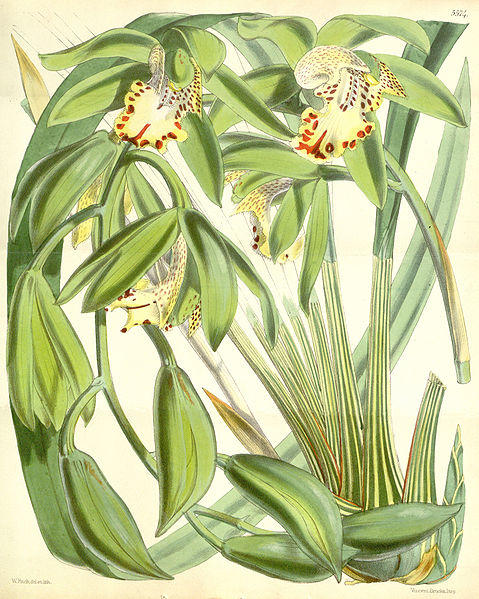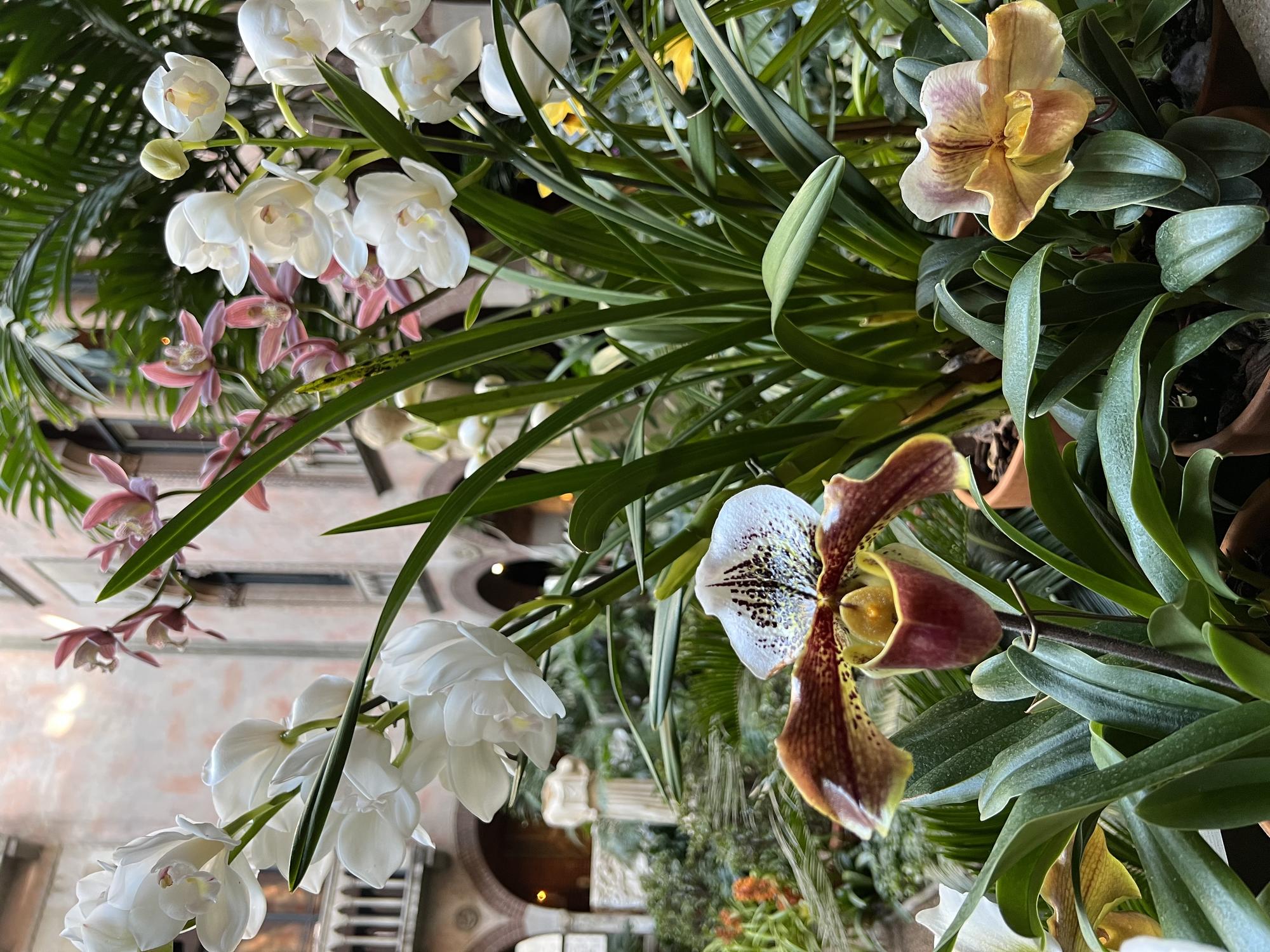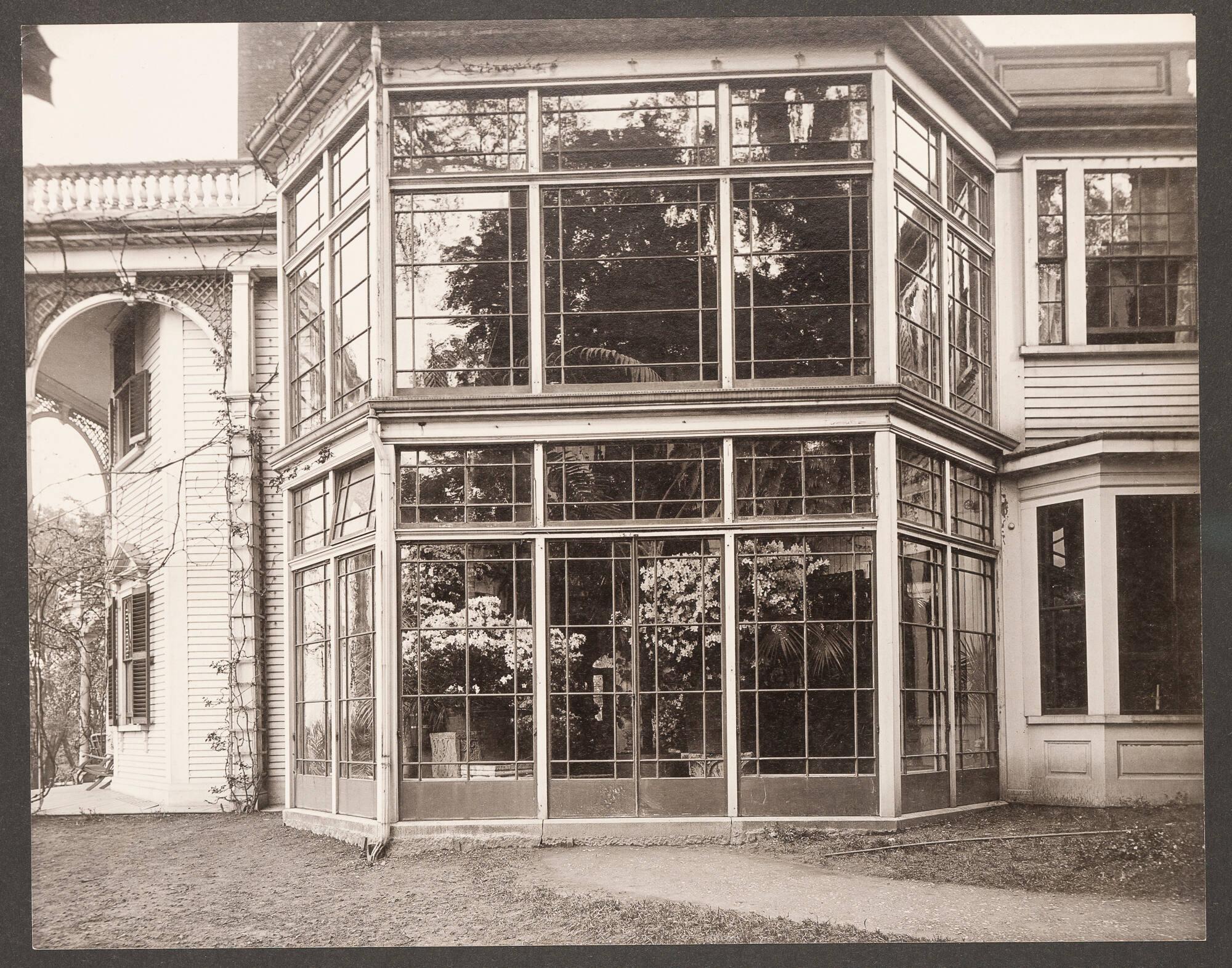During the coldest months of the year, a celebrated collection of tropical plants adorns the Courtyard of the Isabella Stewart Gardner Museum. This verdant display, known as Midwinter Tropics, features the brilliant inflorescences of exotic orchids. Among these, the Cymbidium stands out both for its elegance and historic significance.
Photo: Jenny Pore
The History of Cymbidiums
Indigenous to the forests of Asia and Australia, the Cymbidium—or boat orchid—was first praised in writing for its beauty and fragrance by Chinese philosopher Confuscius around 2500 years ago. The name Cymbidium comes from “cymba”—the Latin word for boat—which refers to the shape of the flower’s lip. Symbolic of virtue and purity, Cymbidiums are thought to have healing properties which protect the immune system and fight disease. Cymbidium flowers are used in perfumes, cosmetics, and as an herbal tea in Chinese medicine for various purposes. Juice from the leaves and powder from the seeds are used in Ayurvedic medicine.

Purchase—Smithsonian Collections Acquisition Program and partial gift of Richard G. Pritzlaff (S1991.95)
Probably by Mangguri (1672–1736), Yinli, Prince Guo of China, Qing dynasty, 1731. Ink and color on silk, 345 x 132.5 cm (135 13/16 x 52 3/16 in). The prince is painted seated next to a planter of cymbidium orchids.
Most commercially available Cymbidiums are hybrids derived from several species harvested from the foothills of the Himalayan mountains. British botanist and explorer Sir Joseph Dalton Hooker—a colleague of Charles Darwin—took an expedition to the Himalayas between 1847–1851. The first known European to collect plants in the region, Hooker harvested the Cymbidium species which were crossed to produce the hybrid Cymbidiums of today. Cymbidium hookerianum—named for the famed botanist— is a delicacy in Bhutanese cuisine. The pseudobulbs are eaten like potatoes. The flowers are boiled and cooked in traditional spicy curry.

Wikimedia Commons
Walter Hood Fitch (Scottish, 1817–1892), Illustration of Cymbidium hookerianum from Curtis’s Botanical Magazine, vol. 92, London, 1866. Chromolithograph
The golden-green strappy leaves of the Cymbidium orchid produce long stems of waxy flowers in spectacular forms and a wide range of colors. One of the most popular flowers in Europe during the Victorian era, Cymbidiums were coveted by the upper class to decorate parlors and palaces. Collecting rare and unusual orchid species was an obsession that became known as orchidelirium. British orchid nurseries began exporting Cymbidiums to the United States during World War II after realizing that the ships supplying Britain with arms and essentials had been returning empty.

Photo: Jenny Pore
Orchids in the Courtyard
I suppose the picture-habit (which I seem to have) is as bad as the morphine or whiskey one…
When orchid fever reached the United States, Isabella was perfectly poised. Much like her self-professed “picture-habit,” Isabella’s penchant for cultivating orchids was well admired in the society pages of the Boston Sunday Post.
Thousands of dollars are spent every year by the society leaders of Boston in vying with each other for the precious victory of being known as the patron saint of Massachusetts’ most beautiful rose, orchid, amaryllis or pansy. So far, not one of Boston’s fair and aristocratic gardeners has been able to produce such orchids as those, incomparable for beauty and variety, grown by Mrs. “Jack” Gardner on her Brookline estate…Every day the gardener of Mrs. Gardner’s country estate in Brookline brings to the Fenway palace a wagon load of orchids and palms, tropical trees and ferns. Every single day new orchids come in to be placed about the inner court, the corridors and various rooms for above all does Mrs. “Jack” love orchids. She watches them with tender solicitude grow and bud and blossom into beauty, and never have they been excelled by those of the other social leaders, either friends or enemies…Pale elusive colors, delicate beauty, unexpected fragrance and odd beautiful varieties, these are what make the Gardner…orchids so much admired in flower show time.

Isabella Stewart Gardner Museum, Boston (ARC.007402)
Gardner Museum horticulturists carefully nurture our collection of Cymbidium orchids as they grow quietly throughout the year. During the summer, they are moved from the Museum’s greenhouses to the outdoor growing space of our South Shore Nursery. This allows the Cymbidiums to experience conditions similar to their natural Himalayan habitat. The distinct difference between day and nighttime temperatures is crucial for flower spike bud formation. Their return to the greenhouses in autumn spares them the threat of New England’s frost.

Isabella Stewart Gardner Museum, South Shore Nursery, Hingham. Photo: Jenny Pore
Cymbidiums at the South Shore Nursery in Hingham, Massachusetts, 2022
In January and February, when winter stalls and days are overcast, the warm glow of sunshine captured in Isabella’s Courtyard atrium promises the hope of spring. To trade the gray winter landscape outside for the green and glow of Cymbidiums in the Palace garden is to enjoy one of the quintessential experiences at the Gardner Museum. After all, Isabella built this inner court to share her paradise with all of us.
You May Also Like

Read More on the Blog
The Promise of the Chimney Bellflower

Explore the Museum
Seasonal Courtyard Displays

Read More on the Blog
The Elevation of the Nasturtium